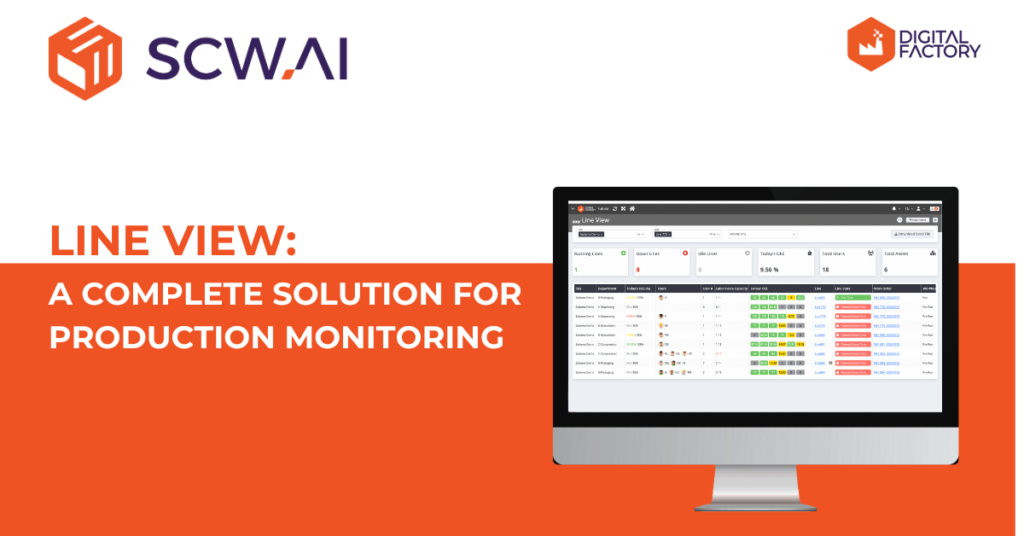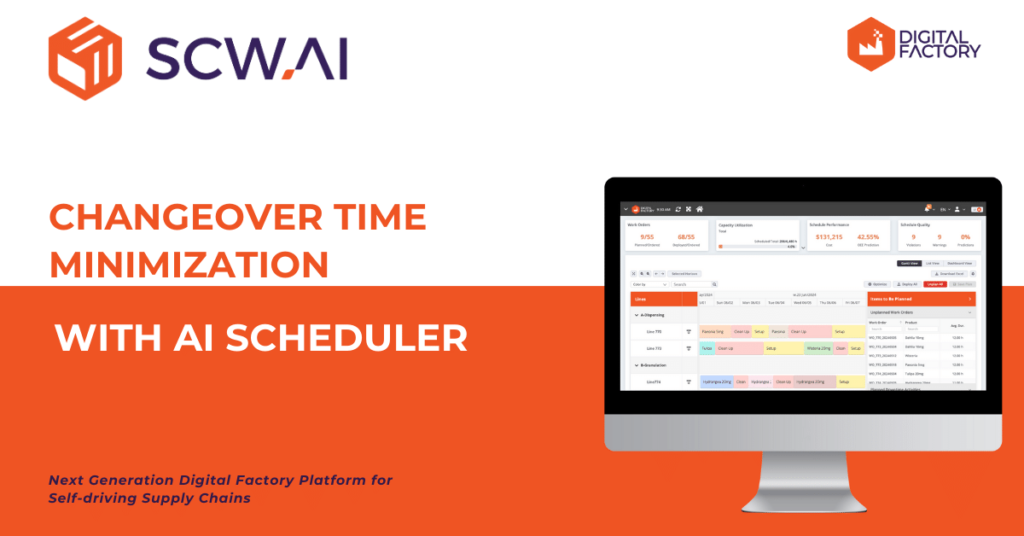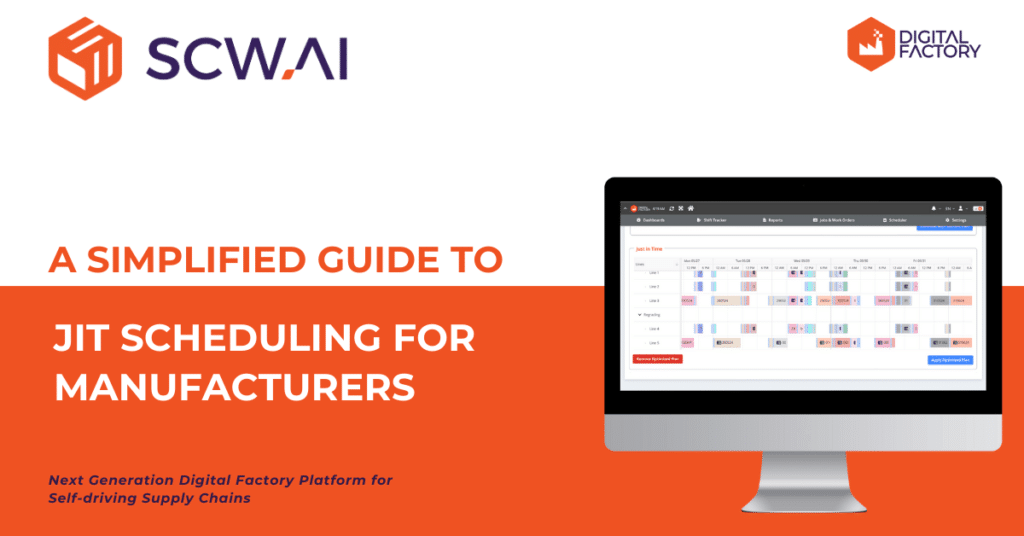According to the U.S. Chamber of Commerce, the manufacturing industry has become one of the most profoundly affected sectors by a labor shortage intensified by the Covid-19 pandemic. As of August 2023, there are over 600,000 job openings, comprising 45% of all available positions within the manufacturing sector that remain unfilled.
The labor shortage has a detrimental impact on the production capacity of manufacturers, if they fail to compensate for it by enhancing labor productivity. On the other hand, the limited visibility into labor activity reduces the opportunity to address labor inefficiencies or allocate work orders based on the experience level of workers.
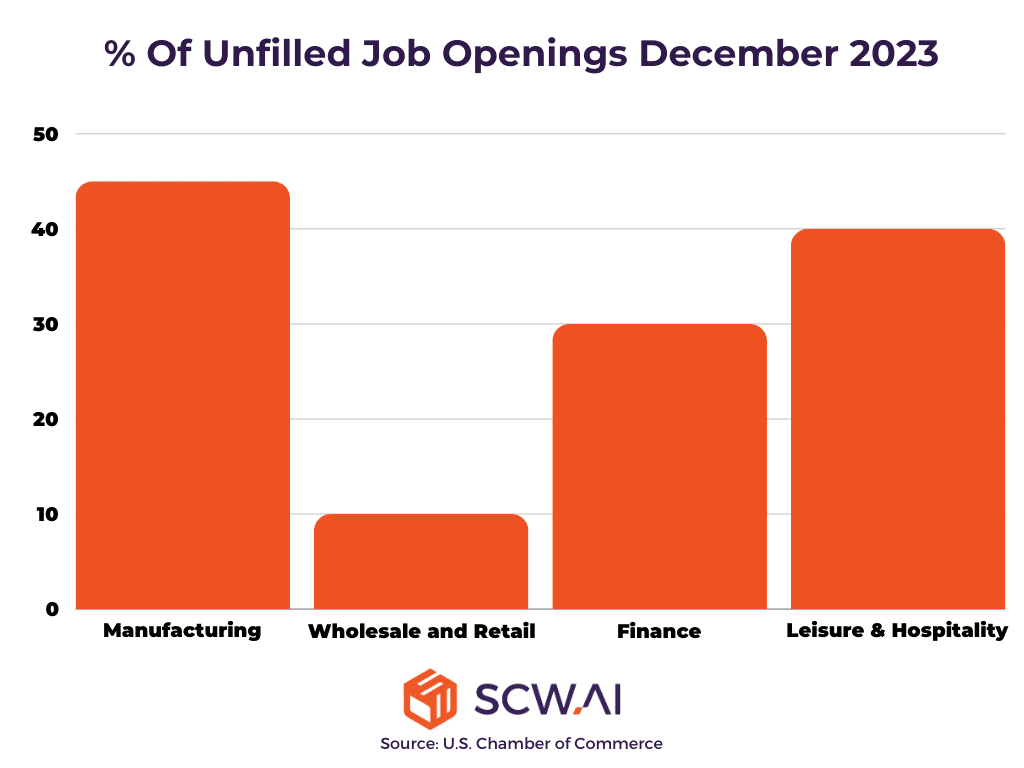
SCW.AI has crafted the Labor Performance Report to empower manufacturing managers in making data-driven decisions concerning workers. This article will initially introduce the Labor Performance Report, followed by a spotlight on the key performance indicators (KPIs) featured in the report. Lastly, we will delve into the use cases of the Labor Performance Report, demonstrating how it aids manufacturers in mitigating the challenges posed by labor shortages.
An Introduction to Labor Performance Report

SCW.AI’s Labor Performance Report enables manufacturers to scrutinize the comprehensive contributions of the workforce involved in the completion of work orders.
The report provides detailed labor data at a granular level, allowing managers to monitor how much time specific workers devoted to particular work orders, products, and lines. Managers can access information on both actual and planned time spent on specific activities by individual workers.
By examining detailed working data over specific time intervals, manufacturers can pinpoint inefficiencies in labor, gain insights into the capabilities of specific workers, and optimize workforce utilization. In summary, the report facilitates manufacturers in enhancing the effectiveness of their workforce management.
9 Metrics Manufacturers Can Monitor Via Labor Performance Report

- Users: The Labor Performance Report enables executives to analyze data to effectively assess the performance of each individual laborer.
- Labor Hours: By leveraging the report, managers can track the amount of time a laborer spends on a specific site and line within a chosen time interval.
- Work Orders: The report provides a comprehensive overview of the work orders completed by a specific worker during a selected time frame.
- Setup Variation Percentage: The metric reveals the variance between the actual time spent on setup activities and the planned time for a specific worker. A score exceeding 100% indicates that the actual time surpassed the planned duration, highlighted in red. Conversely, if the worker completes activities ahead of their expected durations, the metric falls below 100%, and it is highlighted in green.
- Run Variation Percentage: A comparable metric evaluates the specific workers’ ability to execute work orders as planned. Like the previous metric, if the ratio falls below 100%, it is highlighted in green, signifying high labor performance.
- Clean-up Variation Percentage: This metric displays the variance from the planned duration for clean-up activities for specific workers.
7. Weekly Labor Hours
This chart illustrates the weekly labor hours of selected workers, offering insights into the individual efforts contributed by specific staff.

8. Labor Hours Per Line or Product
This chart displays the operator’s labor hours categorized by line or product, offering insights into operators’ affinity for specific machines, lines, or products. It enables the assignment of workers based on their experience, and can also shed light on potential reasons for speed losses in specific lines if consistently operated by the same laborers.
9. Shift Information
The Labor Performance Report includes shift-wise data, enabling executives to assess productivity variations among different shifts. If a particular shift consistently demonstrates low productivity, executives can conduct a detailed analysis to identify the underlying factors and implement targeted actions to address any bottlenecks.

Top 3 Use Cases of Labor Performance Report
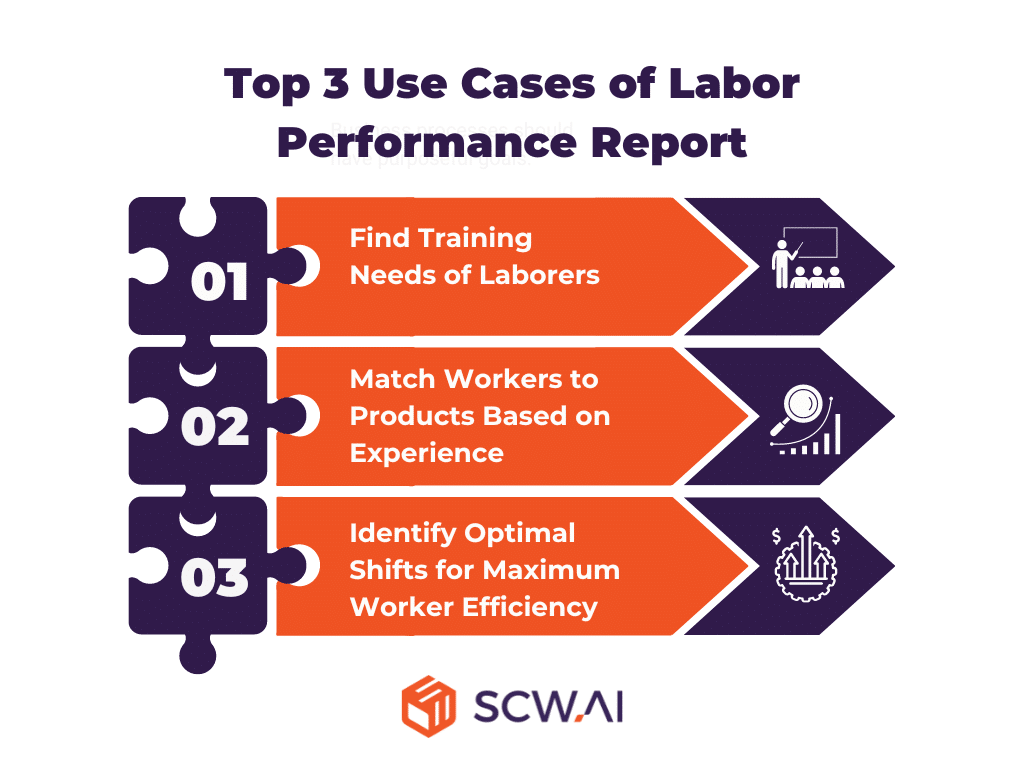
1. Find Training Needs of Laborers
By evaluating metrics such as Setup, Run, and Cleanup Variation Percentages for specific workers, executives can develop targeted training programs to minimize planned and unplanned losses, thereby maximizing overall equipment effectiveness (OEE).
For instance, to reduce changeover time, executives can identify workers who consistently spend more time on setup and cleanup activities than planned. After pinpointing these laborers, executives can provide training on efficient setup procedures, aiming to align the duration of planned and actual downtimes.
Similarly, if certain workers consistently exceed the planned run time, it may indicate incorrect machine utilization, leading to speed losses including micro-stops. Identifying these workers allows managers to organize focused training programs.
An innovative approach for training inexperienced workers involves leveraging digital twins. These virtual replicas of factories create realistic simulations of shop floors, allowing operators to gain hands-on experience in utilizing equipment effectively without any real-world risks.
2. Match Workers to Products Based on Experience
For manufacturers, it is more efficient to assign workers to specific lines or products based on their previous experience. When workers are familiar with specific tasks, they tend to spend less time on them and make fewer mistakes.
The Labor Performance Report provides executives with the necessary data to conduct such analyses. Additionally, another SCW.AI feature that can be combined for such tasks is the Labor Skill Matrix, which displays the time spent by each worker on specific products.
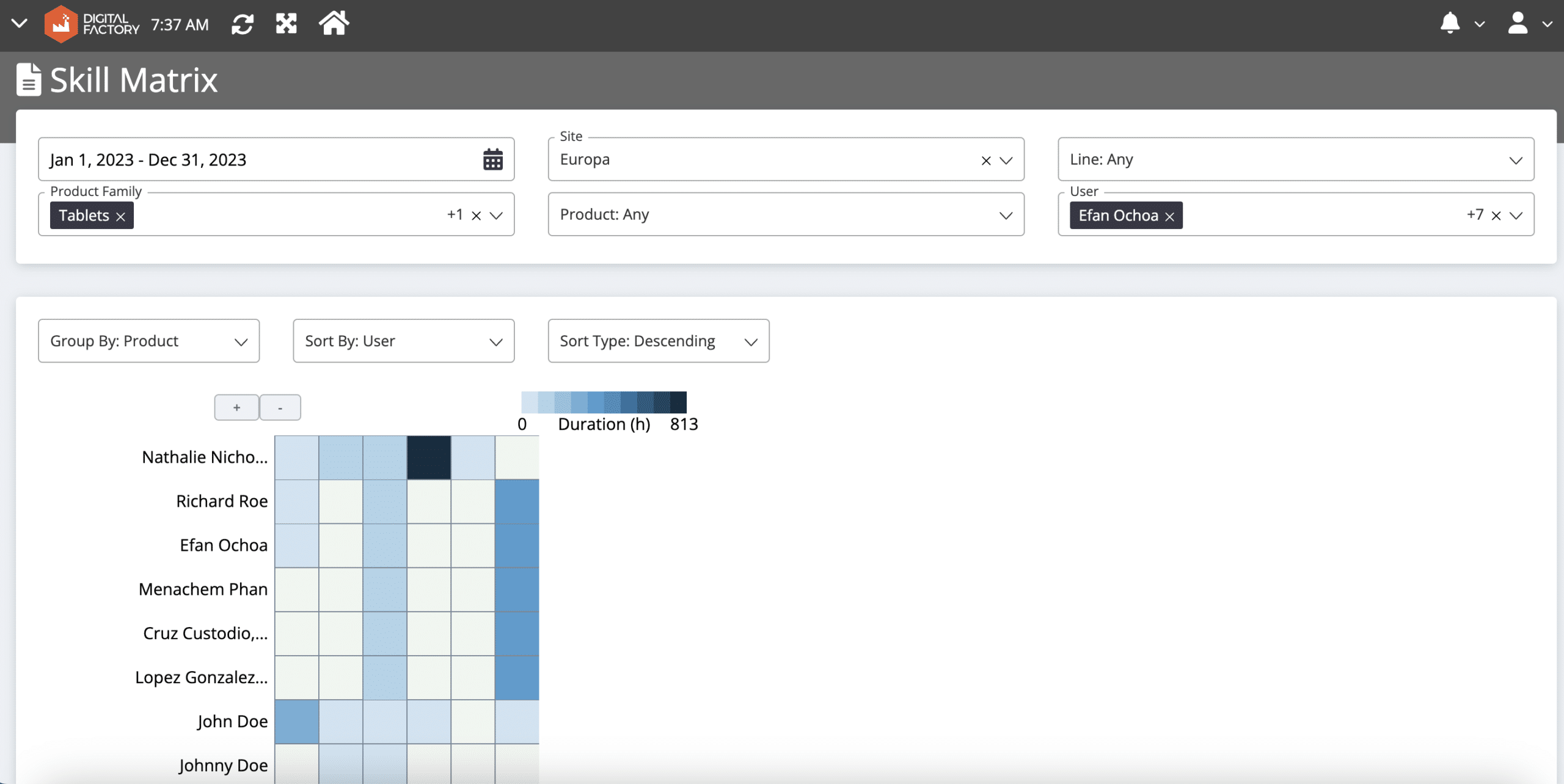
3. Identify Optimal Shifts for Maximum Worker Efficiency
By examining shift-wise data, executives can uncover patterns of productivity variations among different shifts. If a specific shift consistently outperforms others, it is crucial to delve into the underlying factors contributing to this efficiency.
For instance, if the night shift consistently demonstrates higher productivity levels, managers can explore the reasons behind this success. It may be linked to factors such as reduced machine downtime, enhanced worker focus during night hours, or streamlined communication processes. Identifying the factors contributing to optimal shift performance empowers executives to implement targeted actions to replicate success across other shifts.
Moreover, this data-driven approach aids in addressing bottlenecks that might hinder productivity during specific shifts. Executives can allocate resources strategically or even consider adjusting staffing levels based on the insights derived from the Labor Performance Report.
Maximize Return of Labor with SCW.AI’s Digital Factory Platform
The Labor Tracker module within the Digital Factory Platform is meticulously designed for manufacturers to pinpoint bottlenecks related to workers and devise effective strategies to address them. This module provides customers with essential reports and dashboards, including:
- Labor Performance Report
- Labor and Asset View Dashboard
- Labor Skill Matrix
- Labor Scheduling, and more.
To discover how SCW.AI’s tools can enhance your factory’s visibility and productivity, book a demo now.
